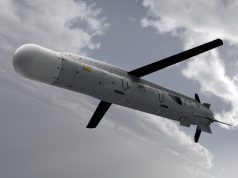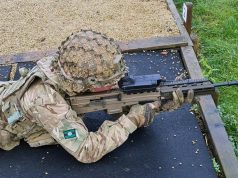The Royal Air Force formally decommissioned its E-3D Sentry airborne early warning and control (AEW&C) aircraft fleet in a ceremony on September 30.
The Royal Parade, attended by His Royal Highness the Earl of Wessex, was held at RAF Waddington.
His Royal Highness the Earl of Wessex, an Honorary Air Commodore, reviewed the parade and was accompanied by Air Officer Commanding Number 1 Group, Air Vice Marshal Allan Marshall and the NATO Airborne Early Warning and Control Force Commander, Major General Thomas E Kunkel from the United States Air Force.
The Officer Commanding 8 Squadron, Wing Commander Williams was the parade commander for the event which saw a flypast from an 8 Squadron E-3D Sentry.
The event also marked 30 years of RAF service for an aircraft which has seen extensive use during operations and with NATO.
These operations include the first deployment, to operation Iraqi Freedom which saw the RAF Airborne Warning and Control System (AWACS) force clock up more flying hours in Iraqi airspace than all other RAF aircraft combined. Through to counter narcotic drug operations in the Caribbean and most recently the aircraft was employed on operation Shader in the fight against Daesh and on operation Fortis which saw them directly supporting the UK carrier strike group.
The E-3D Sentry aircraft flew its final operational sortie on the July 30 over Iraq as part of the counter-Daesh operation.
E-3Ds will be replaced in 2023 by a fleet of three Boeing E-7 Wedgetails that will operate from RAF Lossiemouth in Scotland. During the period between retirement and the Wedgetail becoming operational, the ISTAR requirements will be covered by a combination of other aircraft and E-3s from NATO partners.



























